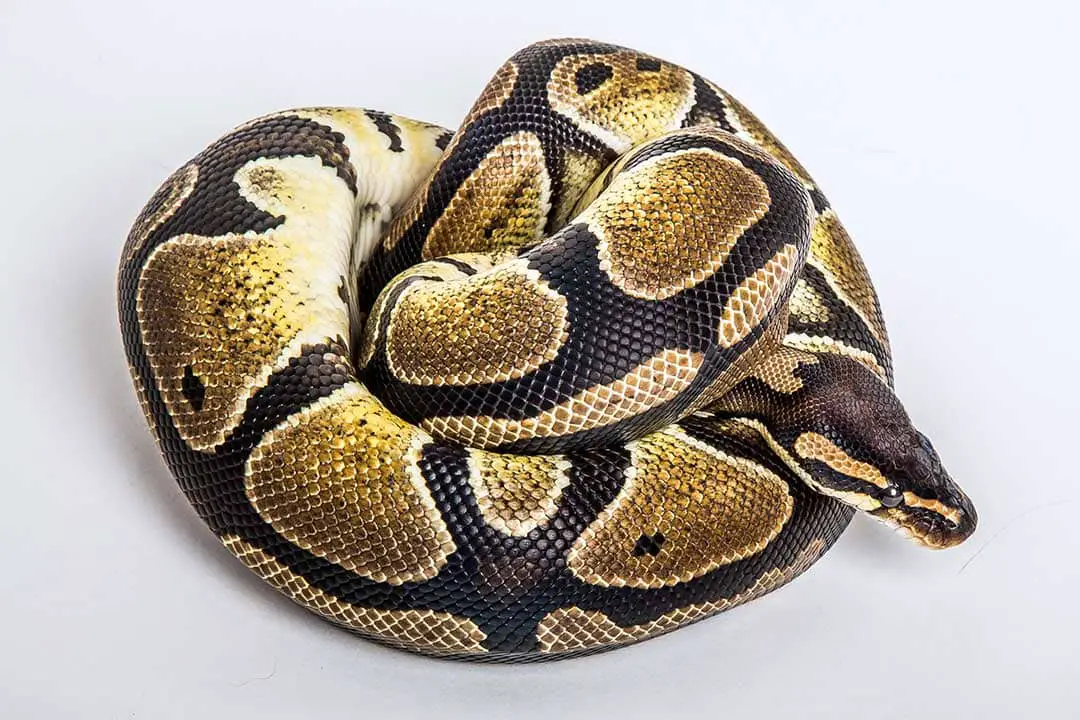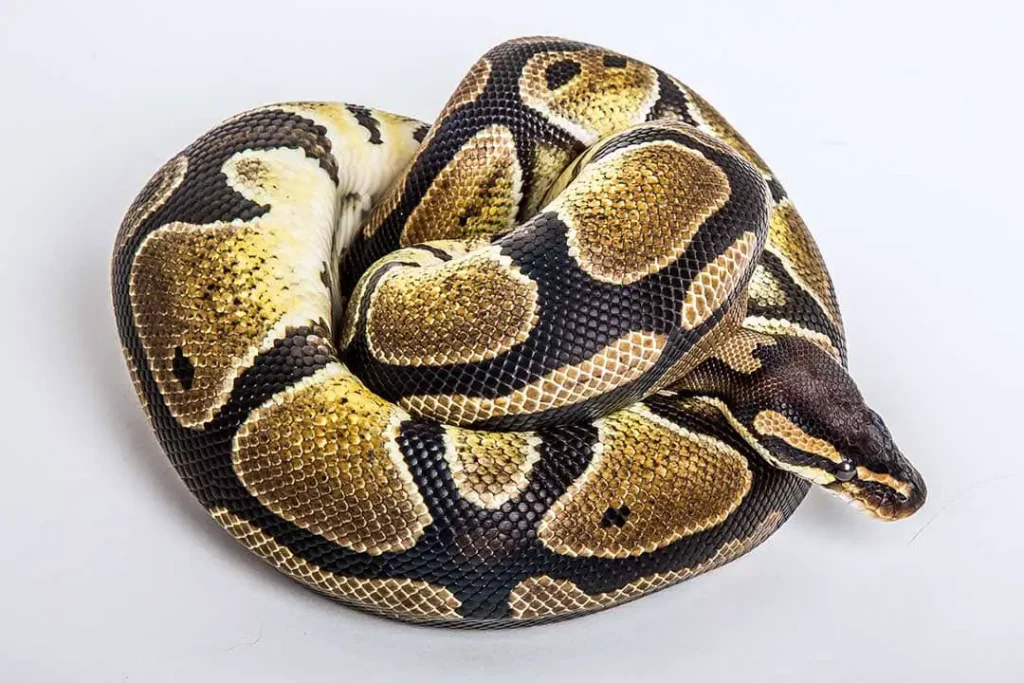Ball pythons are a popular choice for pet lovers around the world. These snakes have a unique habit of curling into a tight ball when they feel threatened or stressed. But why do they do this, and what purpose does it serve? In this article, we will explore the reasons behind this behavior and what it means for pet owners. So, if you’re curious about why ball pythons ball up, read on to find out more!
Ball pythons are known for their tendency to curl into a tight ball when they feel threatened or stressed. This behavior is a natural defense mechanism that allows them to protect their heads and vital organs. Ball pythons may also ball up when they feel insecure or uncomfortable in their environment. Providing a suitable habitat with proper temperature, humidity, and hiding spots can help reduce stress and prevent this behavior.

Why Do Ball Pythons Ball Up?
Ball pythons, also known as royal pythons, are popular pet snakes known for their docile nature and beautiful markings. One of the most common behaviors exhibited by ball pythons is “balling up,” where the snake curls itself into a tight ball. While this behavior may seem strange to us, it is actually a natural defense mechanism for the snake. In this article, we will explore the reasons why ball pythons ball up and what it means.
Reason 1: Protection
When threatened or stressed, ball pythons will instinctively ball up to protect themselves from predators. By curling into a tight ball, the snake can make itself appear smaller and less vulnerable. Additionally, the snake can tuck its head and tail into the center of the ball, making it harder for a predator to attack.
It is important to note that ball pythons are not aggressive by nature and will only resort to balling up as a last resort. As a pet owner, it is important to provide a safe and stress-free environment for your snake to minimize the need for defensive behavior.
Reason 2: Regulating Body Temperature
Ball pythons are cold-blooded animals, which means they rely on their environment to regulate their body temperature. When a ball python balls up, it is able to conserve heat and maintain its body temperature more effectively. This behavior is especially common in cooler environments or during periods of low activity.
As a pet owner, it is important to provide a temperature gradient in your snake’s enclosure to allow it to regulate its body temperature effectively. This can be achieved by providing a heat source on one end of the enclosure and a cooler area on the other end.
Reason 3: Stress
In addition to using balling up as a defense mechanism, ball pythons may also ball up when they are stressed or uncomfortable. This can be due to a variety of factors, such as a noisy or busy environment, improper husbandry, or illness.
If you notice your ball python balling up frequently or for extended periods of time, it may be a sign that something is wrong. Make sure to evaluate your snake’s environment and consult with a veterinarian if necessary.
The Benefits of Balling Up
While balling up may seem like an odd behavior to us, it is an essential survival mechanism for ball pythons. By understanding the reasons behind this behavior, pet owners can provide a safe and comfortable environment for their snakes. Additionally, observing your ball python’s behavior can help you identify potential sources of stress or discomfort.
Ball Pythons vs Other Snakes
While balling up is a common behavior among ball pythons, it is not exclusive to this species. Other species of snakes, such as garter snakes and corn snakes, may also curl into a ball when threatened or stressed. However, ball pythons are unique in their ability to tuck their head and tail into the center of the ball, making them more difficult to attack.
Conclusion
In conclusion, balling up is a natural behavior for ball pythons that serves multiple functions, including protection, temperature regulation, and stress relief. As a pet owner, it is important to provide a safe and stress-free environment for your snake to minimize the need for this defensive behavior. By understanding the reasons behind balling up, you can provide the best possible care for your ball python.
Frequently Asked Questions
Ball pythons are known to ball up, which is a common behavior that often causes concern for pet owners. In this section, we will answer some frequently asked questions about why ball pythons ball up.
Why do ball pythons ball up?
Ball pythons ball up for several reasons. One of the most common reasons is that they feel threatened or scared. When they sense danger, they will quickly roll themselves into a tight ball to protect their head and vital organs. This is a natural defense mechanism that they have developed to help them survive in the wild.
Another reason why ball pythons ball up is to conserve heat. When they are in a ball, they can conserve their body heat more efficiently. This is especially important for them because they are cold-blooded animals that rely on external sources of heat to regulate their body temperature.
Is it normal for ball pythons to ball up all the time?
While it is normal for ball pythons to ball up when they feel threatened or scared, it is not normal for them to do so all the time. If your ball python is constantly balling up and refusing to uncoil, it could be a sign of stress or illness. You should observe your pet closely and seek veterinary help if you notice any abnormal behavior.
It is also important to make sure that your ball python has a comfortable and secure environment that meets their needs. A comfortable and secure environment will help them feel safe and reduce their stress levels.
How can I tell if my ball python is stressed?
There are several signs that your ball python may be stressed. One of the most common signs is that they will ball up more frequently than usual. They may also refuse to eat or drink, become lethargic, or show signs of aggression. If you notice any of these signs, you should take your pet to a veterinarian to determine the cause of their stress.
It is important to note that stress can be caused by a variety of factors, including inadequate housing, improper temperature or humidity levels, and poor nutrition. By providing your ball python with a comfortable and secure environment that meets their needs, you can help reduce their stress levels.
How can I help my ball python feel more comfortable?
There are several things you can do to help your ball python feel more comfortable. First, make sure that their enclosure is properly set up and maintained. This includes providing them with a suitable substrate, hiding places, and proper temperature and humidity levels.
You should also handle your ball python regularly to help them become accustomed to human interaction. This will help reduce their stress levels and make them feel more comfortable in their environment. Finally, make sure that you are feeding your ball python a balanced and nutritious diet to help keep them healthy and happy.
Can ball pythons suffocate themselves when they ball up?
It is unlikely for a ball python to suffocate themselves when they ball up. When they are in a ball, they are still able to breathe normally. However, it is important to note that if a ball python is left in a tight ball for an extended period of time, it could lead to circulation problems or other health issues. It is important to monitor your pet closely and make sure that they are uncoiling and moving around regularly.
If you have any concerns about your ball python’s health or behavior, you should seek veterinary help as soon as possible.
The Three Stages of Ball Python Activity – Benjamin’s Exotics
In conclusion, ball pythons ball up as a defense mechanism to protect themselves from perceived threats. This instinctive behavior is an effective way for them to hide their vulnerable head and neck region from potential predators. Additionally, balling up helps them conserve their body heat and maintain an optimal temperature for digestion.
While this behavior may seem alarming to some owners, it is important to understand that it is a natural response for ball pythons. As responsible owners, we can minimize their stress levels by providing them with a suitable and comfortable environment. This includes a spacious enclosure, proper heating and lighting, and appropriate hiding spots.
Overall, ball pythons are fascinating creatures with unique behaviors. By understanding and respecting their natural instincts, we can create a safe and healthy environment for them to thrive in captivity.


